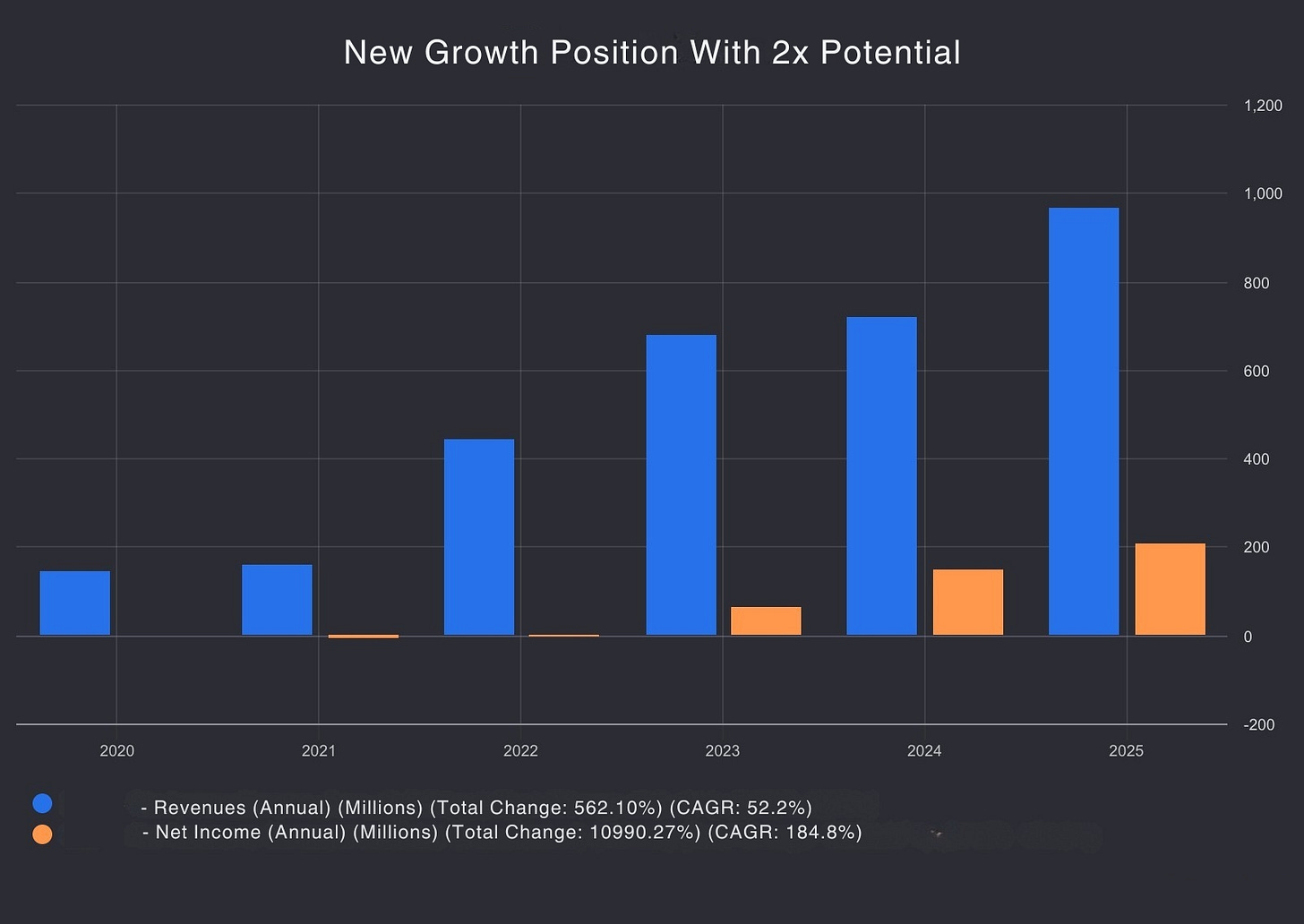Buying This Growth Stock Trading At 50% Discount To Intrinsic Value!
Disrupting a traditional industry with a fully digital business model, growing fast and has just started to expand internationally.
Our portfolio has experienced one of its best months ever in the last four weeks.
It is now up 57% in the last twelve months.
This performance was largely driven by our fast-growing positions that have become multi-baggers in the course of the last 24 months.
Most of these positions had one common property—they are emerging leaders in the digital transformation of traditional industries.
This isn’t a coincidence; this is a deliberate strategy we have been following in picking our growth positions.
For companies to grow fast, they need two things:
Competitive edge.
Strong demand that can support fast growth.
These two factors strike a balance among themselves.
When the demand isn’t that strong, the competitive edge should be stronger for any company to grow fast. When the demand is strong, even a slight competitive edge could be enough for fast growth.
Here is the caveat—companies with definitive competitive advantages are very rare.
This is why most of them are very well-known, and naturally, the market prices them accordingly; they trade at a high premium most of the time.
On the other hand, overall demand doesn’t change drastically in many markets. This limits the possible creation of fast growers in those markets because the contestable share of the market isn’t too big. Every now and then, new markets with stellar demand emerge, but because of this rarity, they are so obvious that valuations skyrocket. Look at the valuations of emerging cloud companies today, like Coreweave.
So, where do we find fast growers nowadays?
In traditional markets that are going through a complete digital transformation.
These are the markets where established business models are completely changing.
This creates a shift in demand, and a market that was deemed uncontestable becomes contestable again, a fruitful ground for the emergence of fast-growing companies.
Insurance is an example.
Digital transformation of the industry created insurtech companies that go direct-to-consumer through digital channels like the web or their apps. Customers who are tired of the traditional insurance model that goes through agents and takes a long time and effort, switch to these new providers. Combined with new, younger customers who predominantly prefer natively digital channels, the contestable share of the market suddenly increases.
Thanks to the shift in the existing demand, what was deemed an uncontestable market becomes much more contestable. This is a fertile soil for fast growers.
In this environment, you could pick a business that has a slight competitive edge over others, and it’ll likely perform very well because of the shifting demand.
We have been very successful in deploying this strategy for financials.
It’s a market that is experiencing the same shift in demand due to rapid digital transformation. For financials, digital transformation didn’t just shift the demand; it also enabled true globalization for the first time in history, unlocking opportunities for rapid international expansion.
By picking players who have a bit better competitive position, we have made a lot of money in this sector. Dave, Sofi, DLocal, RobinHood are just a few examples..
Now, I think I have found another one.
Take a look at this:
This company:
Has grown revenues 50% annually in the last 5 years.
Hit the inflection point and has become profitable.
Has just started its global expansion.
What’s even better?
It’s trading at just 8x 2027 earnings with just $3.5 billion market cap.
Ironically, SOFI was valued at the same 2027 multiples when I first bought it back in 2023, and it has made 4x since then.
I think this one will be similar.
Even under conservative assumptions, it can easily make 2-3x in the next 5 years as it’s trading at a huge discount to intrinsic value.
So, let’s cut the introduction short and dive deep into this gem:
🏭 Understanding the Business
Venture capitalists divide businesses into two groups:
Vitamins
Painkillers
Vitamins are those ‘nice to have’ products. Some people who can afford them buy or use them because they give them pleasure, or make their lives more comfortable. These products generally require robust marketing because people need to be convinced that the impact of the product on their lives will be substantial.
Painkillers, on the other hand, are ‘must-have’ products.
They don’t just make your life easier; they save you from something painful. Thus, they don’t require much marketing; the product sells itself and goes viral.
This is why venture capitalists try to invest exclusively in painkillers.
This business was a painkiller.



